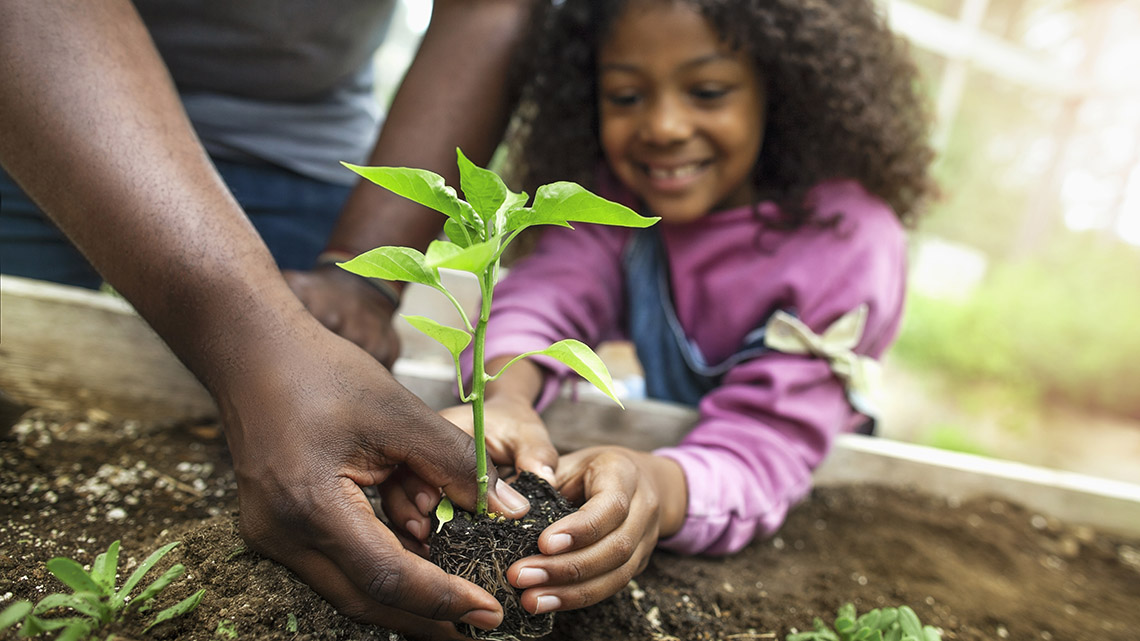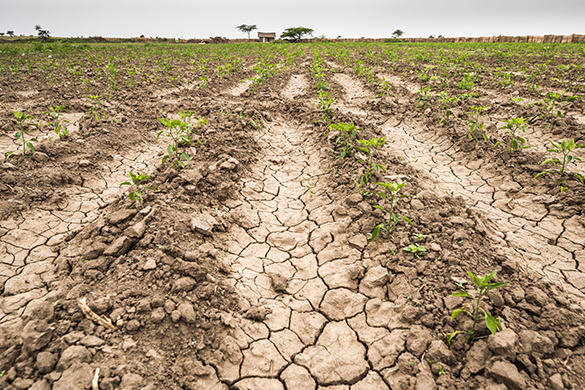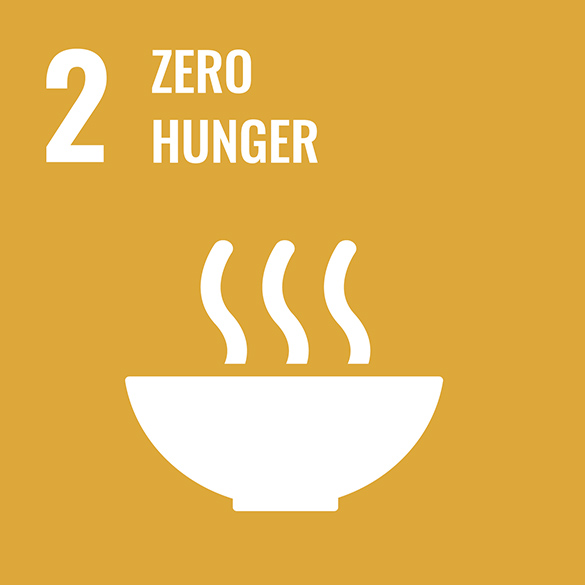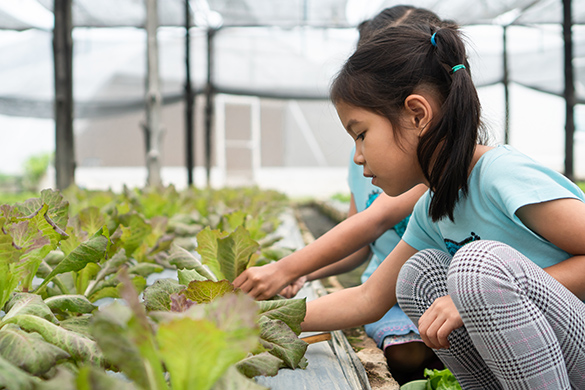Minds On
Soil

Plants, animals, and humans rely on soil in so many ways.
Soil is an essential part of ecosystems, it covers the Earth, and it can be found in all parts of the world.
But what exactly is soil? How is soil made?
Let’s check out the following True and False questions to help us learn more about soil.
Select the correct answer, then press ‘Check Answer’ to see how you did.
Complete the What I Know About Soil Activity in your notebook or using the following fillable and printable document. If you would like, you can use speech-to-text or audio recording tools to record your thoughts.
| What I know about soil… | What I wonder about soil… |
|---|---|
Press the ‘Activity’ button to access What I Know About Soil Activity.
Action
Types of soil
Soil is a key element that plants, animals, and humans depend on. Wind and water wear down large rocks that become a part of soil. There are many different components to soil.
Explore the following images and descriptions to learn more about soil.
Investigate
Investigate
Investigating soil is interesting!
Access the following short videos clip of soil.
As you explore the videos, record what you notice about each one.
You may also use the following checklist to guide your investigation.
Soil investigation
Access the following video to investigate the first soil type.
Check out the following video to investigate another soil type!
Explore the following video to learn more about the third soil type.
Complete the Soil Investigation Activity in your notebook or using the following fillable and printable document. If you would like, you can use speech-to-text or audio recording tools to record your thoughts.
 |
I notice… Record what you notice about each type of soil. What is similar and different from the other types of soil? |
 |
I think… What type of soil do you think each one is? How do you know? |
 |
I wonder… Is there anything else you are wondering? |
Press the ‘Activity’ button to access Soil Investigation Activity.
When you’re ready, press ‘Let’s Check!’ to access possible answers to the soil investigation.
|
I notice… |
In video 1, I noticed ants in the soil. The soil is light brown. It has a grainy texture. It is dry. In video 2, I noticed a plant is growing. The soil is dark in colour. It appears to be damp. In video 3, I noticed the soil is red and brown. There are feet stepping on the soil and it packs down. The soil is wet and very thick. |
|
I think… |
In video 1, I think that this is sandy soil because it appears closer to a sand colour and is loosely packed. In video 2, I think this is loamy soil because it is darker in colour, and a plant is growing out of it. In video 3, I think it is clay soil because it is reddish in colour and holding the water. |
|
I wonder… |
I wonder what kind of soil I might see in my community. |
Layers of soil
Soil is made up of clay, silt, and sand. In our environment, soil separates into different layers.
Check out the following image and description to learn more about the layers of soil.

The soil layers are humus, topsoil, subsoil, rock fragments, and bedrock. The top layer is humus which is mostly grass. Next is topsoil, which is soil, a few rocks, and plant roots. Third layer is subsoil with larger rocks, soil, and larger roots. Fourth layer is weathered rock fragments, which are larger rock fragments than the subsoil layer. The last is bedrock with solid and heavy rock pieces.
Try to notice how soil separates itself into different layers under the earth, depending on the depth.
For example, the deepest layer of soil is full of solid, heavy rock pieces and is known as the “bedrock.” Each layer towards the surface contains fewer rocks until it reaches the top layer called “humus,” which mainly contains plant roots from the grass and helps plants root firmly into the soil.
Humus is what helps the plants grow on top of soil.
Topsoil and subsoil are made up of clay and silt. Clay traps water in the roots. Silt has important minerals and nutrients.
Below topsoil and subsoil are rock fragments. Rocks can also be sand and gravel, which help drain water quickly and prevent plant roots from rotting. The lowest layer is bedrock.
Soil naturally settles into this order of levels, but how?
Let’s experiment!
In this experiment, you are going to explore soil texture, the layers of soil, and how it separates into levels.
Let’s check out the “Predict” and “Experiment” steps from the Scientific Experimentation Process.
Predicting is when you make a guess about what you think will happen in your experiment.

When you do an experiment, you are trying to find out the answers to the questions you asked.

Check out the following video entitled “Soil Separation” to make observations about soil.
Complete the Soil Separation Activity in your notebook or using the following fillable and printable document. If you would like, you can use speech-to-text or audio recording tools to record your thoughts.
| Steps | You Ideas |
|---|---|
| Prediction | What will happen to the mixture of shaken soil after it’s been sitting for a few days? |
| Observations |
What did you observe in the jar immediately? What did you observe in the jar after a few days? Record your ideas with text, visuals and/or audio. |
Press the ‘Activity’ button to access Soil Separation Activity.
Press ‘Let’s Check!’ to access the experiment’s results.
In this soil experiment, we observed the soil separate into different layers. Heavy particles sink the bottom and lighter layers rise to the top, just as we explored in the image and checklist about soil layers.
Did You Know?
Did you know?
What does it mean to know that soil is healthy? How can you tell if soil is healthy?
One way to tell that soil is healthy is to observe the plants that are growing in it. Another word for healthy soil is “fertile” which means that things grow well.
About 3% of the Earth’s soil is good for growing.
Healthy soils also store and filter water, recycle nutrients, and help us to deal with the negative effects of climate change. How we treat soil determines whether or not the soil is healthy.
Check out the following images of soil. Which one do you think is healthy and unhealthy?


Press ‘Let’s Check!’’ to access the correct answer.
The dry, cracked soil is unhealthy soil. The damp soil with many plants growing is healthy soil.
United Nations and zero hunger
Connecting to the world

The United Nations (UN) is a group of many countries from around the world that have come together to create a better future for people and the environment. They have created 17 goals called the Sustainable Development Goals.
This learning activity is connected to Goal #2 which is called Zero Hunger. This means that everyone should have access to safe and nutritious food. Nutritious food helps someone grow and gives them energy.
Using plants for food is one way that people all over the world can help each other access safe and nutritious food.
As part of this goal, farmers are exploring how agriculture can be both more sustainable and more productive.
Soil champions
Let’s learn more about sustainable farming with soil champions from Long Island in the United States. These soil health champions are working to protect soil and keep it healthy.
Check out the following video to learn more about keeping soil healthy when farming! As you are exploring the video, try to identify three strategies that are recommended to farmers.
What were three strategies that the soil champions recommended?
Record your ideas in a notebook or another method of your choice.
Press ‘Let’s Check!’ to access the three strategies.
The three strategies are:
- cover crops–growing a special kind of plant used to improve soil health
- rotating crops – changing which crop you plant each year
- reduce tillage or no till – keeping the natural soil structure
Consolidation
Learning check!

You have learned a lot about soil, the different types of soil, and what helps to keep soil healthy.
For each soil type, select the corresponding image.
Once you have correctly identified each type of soil, prepare a short description of how each these types of soil are important for growing crops.
You may record your thinking in the following fillable and printable graphic organizer, or in another method of your choice.
| Soil type | How it can be useful to grow certain crops |
|---|---|
| Clay soil | |
| Sandy soil | |
| Loamy soil |
Press the ‘Activity’ button to access the Soil types for growing crops
Reflection
How do you feel about what you have learned in this activity? Which of the next four sentences best matches how you are feeling about your learning? Press the button that is beside this sentence.
I feel…
Now, record your ideas about your feelings using a voice recorder, speech-to-text, or writing tool.